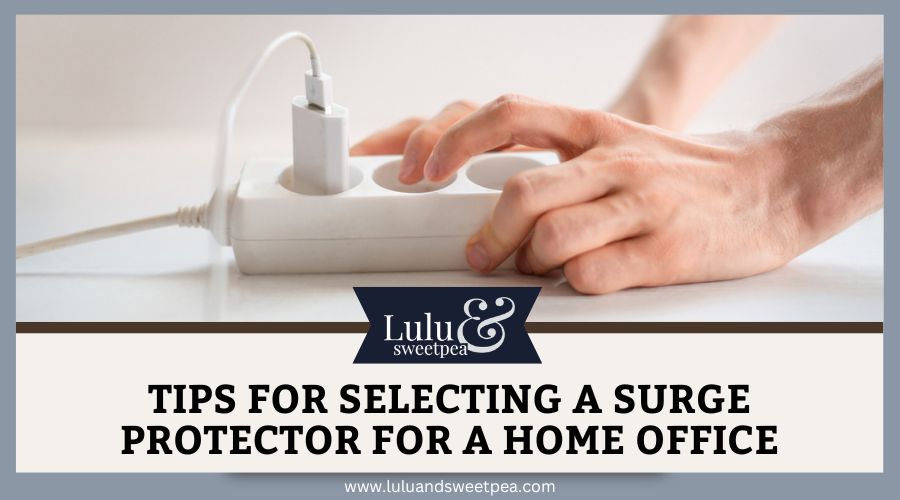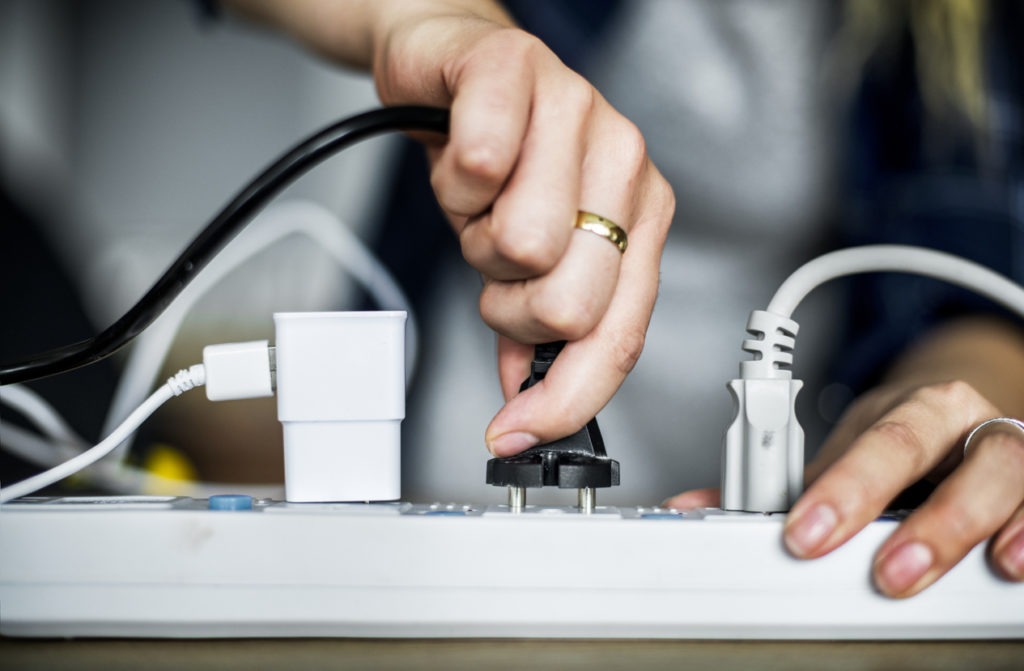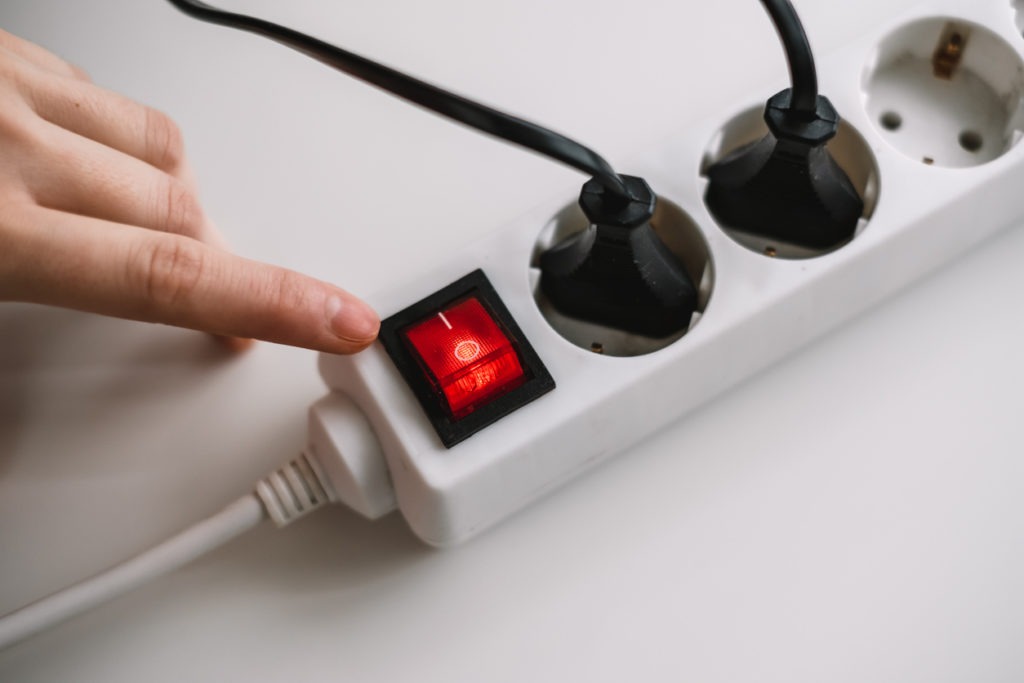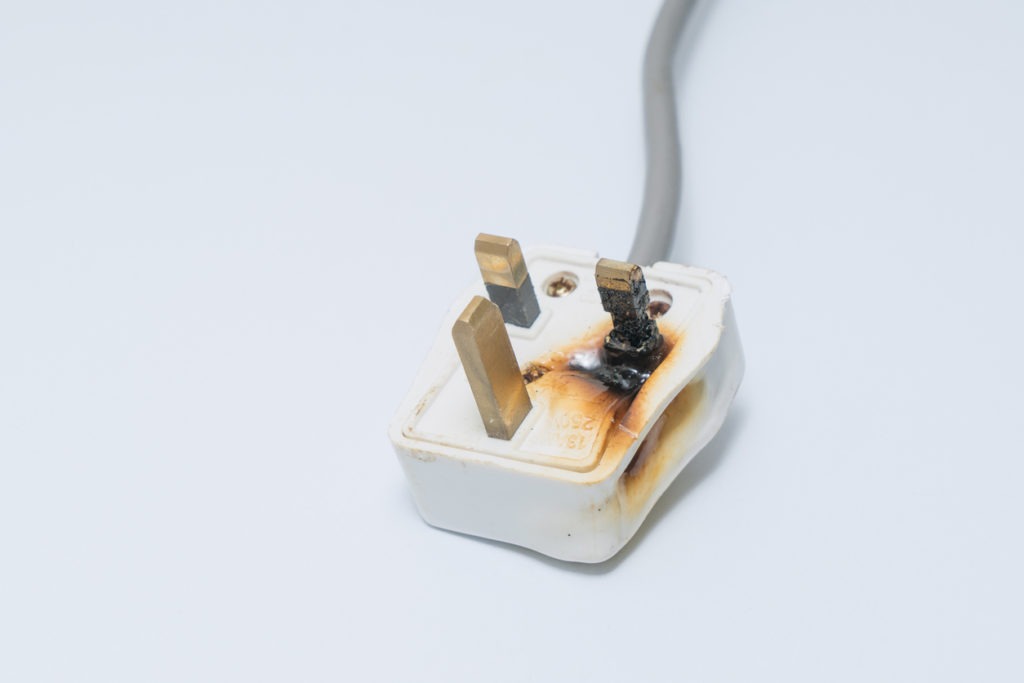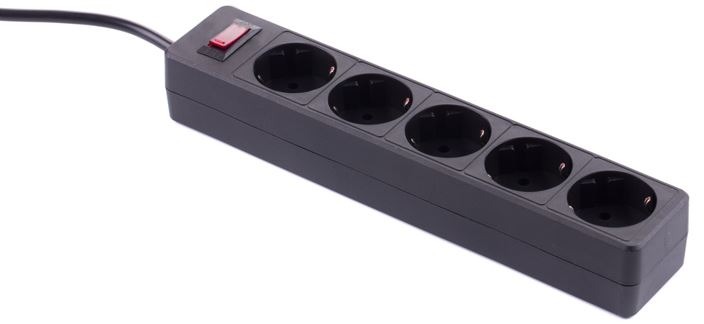A quality surge protector is essential when protecting computers, printers, fax machines, modems, routers, and other electronic equipment in a home office setting. Not only can these devices help keep sensitive electronics safe from electrical damage caused by power outages or sudden spikes in voltage, but many models also provide additional protections like fireproofing or port locking for greater security.
This blog post will cover different types of surge protectors to help you determine which is best suited for your home office environment.
Basics of Surge Protectors
First and foremost, it’s important to understand the basics of surge protectors. Surge protectors are devices designed to protect your electronics from damage caused by power surges. They work by monitoring the voltage levels in an electrical system and automatically cutting off the power supply if a dangerous voltage level is detected. This can help safeguard your equipment from voltage spikes that could cause permanent damage or fire.
Things to Consider When Buying Surge Protectors
When selecting the best surge protector for your home office, it’s important to consider the specific needs of your environment. Many surge protectors offer additional features beyond power protection, like fireproofing or port locking. Port locking, for example, is a feature that allows you to restrict access to a particular outlet or device so that only authorized personnel can use it. This is a great feature for offices that need to secure sensitive data or where safety concerns may be an issue. Other models may be fireproof, designed to prevent the spread of fire from an electrical fault.
In addition to looking for features that provide additional safety, selecting a surge protector compatible with your home office equipment is important. For example, if you have multiple electronics that require protection, you may need a multi-outlet surge protector that can accommodate your devices. Additionally, don’t forget to check the warranty on your surge protector – many manufacturers offer extended warranties to ensure you are fully protected.
Benefits of Surge Protectors
Protects Delicate Electronics
Not only does it protect your electronics from getting fried in a power surge, it can also extend the life of your devices. A good surge protector will have safeguards that prevent electrical overloads and short circuits, which can cause expensive damage to delicate electronics. This feature keeps your electronics safe from power surges, which can be caused by lightning or power outages. It will also protect your electronics from spikes in voltage, which could result in data loss or damaged hardware.
A Small Investment Compared to Costly Repairs
A good quality surge protector may cost more than a cheap alternative, but the extra expense is worth it. A quality surge protector will provide superior protection for your home office electronics and save you money in the long run. A surge protector will help you avoid costly repairs or replacements if your devices get damaged due to electrical surges.
Flexibility
A surge protector should come with enough outlets to plug in multiple devices and larger plugs that can accommodate various sizes of cords. This can be especially important in a home office, where you may have multiple devices and cords of all sizes. Look for a surge protector with enough outlets and flexibility to accommodate your devices.
Availability of Different Options
Although traditional surge protectors may be bulky and take up precious floor space, there are models that come with a wall mount option. This makes it easier to attach a surge protector to the wall or ceiling, keeping your home office area neat, organized and away from water splashes.
How Surge Protectors Work?
Surge protectors help protect your electronics and appliances from a power surge. They can also be referred to as surge suppressors or transient voltage surge suppressors. These devices’ main purpose is to protect against spikes, surges and fluctuations in the electrical current as well as lightning strikes, which can cause damage to your electronic equipment.
Surge protectors provide a path for extra electricity (above the normal operating level) to be safely discharged outside the electrical system. They come in three types: plug-in, whole house, and breaker panel. Plug-in devices are designed to be plugged into an outlet and provide surge protection to appliances connected to it.
Whole house surge protectors are designed to be installed at the main electrical panel and protect the entire home or office. Breaker panel surge protectors are installed inside the breaker and offer additional protection from surges. Some surge protectors also help reduce energy costs and while providing protection for sensitive electronics, like computers and televisions.
Types of Surge Protectors
Power Strip Surge Protectors
Power Strip Surge Protectors are the simplest and most common type of surge protectors. They are typically used to protect computers, printers, televisions, entertainment systems, and other electronic devices. Power strips usually have several outlets, while some have a built-in USB port. These protectors contain a MOV (Metal Oxide Varistor) that absorb power surges before they reach your electronic devices.
Wall-Mount Surge Protectors
Wall-mount surge protectors are installed directly onto an outlet and provide extra protection for larger electronics such as fridges, washing machines, and air conditioners. They typically contain more advanced circuitry than a power strip protector, which offers enhanced protection from power spikes.
Whole House Surge Protectors
Whole House Surge Protectors are installed at the electrical service entrance of a home and offer protection for all outlets in the house. They contain multiple layers of MOVs that can absorb significant power surges from outside sources, such as lightning strikes or downed power lines.
Energy Saving Surge Protectors
Energy-Saving Surge Protectors are designed to reduce energy consumption and increase the life of electronic devices. These protectors use advanced circuitry that reduces the power consumption of plugged-in devices and can detect when a device is idle or not in use, shutting off its power supply to conserve energy.
Remote Controlled Surge Protectors
Remote-controlled Surge Protectors are designed to provide convenience by allowing the user to turn connected appliances on or off from a distance. This type of protector is ideal for homes with multiple connected electronics, as it can control all devices simultaneously from a remote location. They typically feature LED indicator lights that provide real-time information about the power status of your equipment.
Things to Consider in Surge Protectors
Number of Outlets
For a home office, one of the most important things to consider when purchasing a surge protector is the number of outlets. Make sure you choose a surge protector with enough outlets to accommodate all your electronic devices. Consider what connections are needed, such as USB ports and the type of plug you have to use like EU or US plugs.
UL 1449 Standard Certified
UL 1449 Standard certification (Underwriters Laboratories Safety Standard for Surge Protective Devices) is a good indicator of how well a surge protector will work. This certification ensures the safety of your electronics as it indicates that the surge protector has been tested to handle large surges or spikes in electricity.
Absorption/Electric Rating And Clamping Voltage
When looking at a surge protector, check the absorption/electric rating and clamping voltage. The absorption rating indicates how much power the surge protector can absorb and should be at least between 200 to 400 joules, while you’d want a 600 joules rating for an even better protection.
The clamping voltage is the level at which the surge protector will kick in and begin transferring electricity to the ground line. Commonly used levels are 300, 400 and 500 volts, but anything over 400 volts is considered too high. Rated in nanoseconds, anything less than one nanosecond is considered to be good enough for most home appliances.
Response Time
Another important specification to look for is the response time, which refers to the time a surge protector will take to kick in. Even a very slight delay in response time can be enough to destroy an electronic device, so the surge protector has to kick in almost immediately.
Conclusion
Surge protectors are an essential part of any home office environment. They help protect expensive electronics and devices from power surges and spikes. Choosing the right surge protector should be based on a number of factors, including the number of outlets required, the type of devices being used, absorption rating and response time. It’s always recommended to stick with known brands that are certified and deliver what they promise. Buying no-name products with no history or user feedback is a gamble you should not play with your costly electronics.
